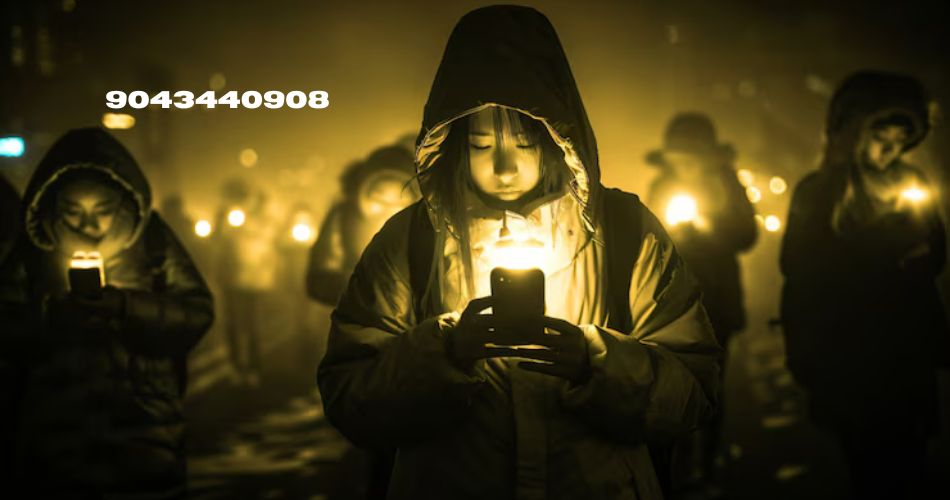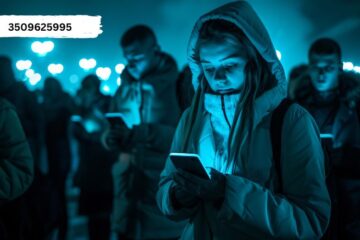The number 9043440908 has emerged as an unexpected point of curiosity across the digital landscape. People have started reporting random calls from this number, posting screenshots on forums, and even speculating about its origin in videos and comment sections. But why has a 10-digit number drawn so much attention? In an era where almost anything can go viral, 9043440908 has tapped into a blend of fear, fascination, and mystery that captivates internet users. Whether you’ve received a missed call, seen this number circulate online, or are simply curious, this article takes a deep dive into what 9043440908 really is and why it matters.
The First Appearance of 9043440908
Tracing the origins of 9043440908 isn’t straightforward. It seems to have emerged quietly at first, with individuals reporting missed calls or voicemail messages. The earliest online traces date back several months ago, but the number gained momentum when it began circulating on platforms like TikTok and Reddit. In some cases, users uploaded reaction videos showing themselves calling the number and reacting to what they heard—or didn’t hear—on the other end. This only added fuel to the fire, prompting others to try it for themselves, sparking a wildfire of attention across digital communities.
Why People Are So Curious About 9043440908
Curiosity is a powerful motivator, and when it comes to phone numbers like 9043440908, the blend of mystery and uncertainty is too tempting for many to resist. People love puzzles, and when a phone number seems to be attached to unexplained calls or cryptic messages, it quickly becomes a social media sensation. The psychology behind such viral trends is rooted in the human desire for discovery, storytelling, and community experiences. When people feel like they’re part of something strange or unique, it fosters a connection—and numbers like 9043440908 deliver exactly that.
Theories About What 9043440908 Really Is
Speculation around 9043440908 is as diverse as the people posting about it. Some believe it’s part of a social experiment or alternate reality game (ARG), designed to test user reactions or spark curiosity. Others think it might be a telemarketing or robocall number, randomly dialing potential targets. There are also those who claim supernatural or eerie experiences tied to the number, although there’s no credible evidence to support such claims. It’s not unusual for the internet to turn a simple occurrence into a mythic narrative, especially when no official information is available to debunk or clarify the story.
Could 9043440908 Be a Scam or Spam Call?
One of the more practical explanations for the 9043440908 phenomenon is that it might be associated with spam or scam operations. Many users report that the number either calls and hangs up immediately or leaves a blank voicemail. These are classic behaviors linked to phone scams, where the goal is to prompt a call-back from the recipient, potentially exposing them to high charges or phishing attempts. Websites that track suspicious calls often list 9043440908 as “potentially unsafe,” further hinting at its possible misuse.
What Happens When You Call 9043440908?
For those brave—or curious—enough to call 9043440908, the experience varies. Some people report hearing nothing at all. Others say the call disconnects right away. A few even mention automated messages or strange background noises, though these accounts are inconsistent and unverified. The randomness of the responses only adds to the sense of intrigue. Is it just a dead-end number being used for robocalling, or is there something more going on behind the scenes?
Social Media’s Role in the Spread of 9043440908
It’s no secret that platforms like TikTok, Instagram, and Twitter (now X) have become amplifiers of oddities. Once a few people posted about the number 9043440908, it didn’t take long for it to spread like wildfire. Hashtags, duets, reaction videos, and speculative content all contributed to its reach. In the social media age, visibility can turn a single moment—or in this case, a phone number—into a global conversation in a matter of hours. What begins as a quirky mystery quickly becomes a viral phenomenon.
9043440908 and the Power of Digital Folklore
Modern digital folklore is built differently from traditional urban legends, but the mechanics are similar. We no longer pass stories around campfires; instead, we tweet, post, and comment. Numbers like 9043440908 become part of a shared internet mythology, with every new video or post adding to the legend. The sense of collective experience, whether authentic or staged, helps cement these stories into the broader culture of the web.
Is There Any Danger in Calling or Messaging 9043440908?
While calling 9043440908 may seem harmless, there are real risks involved. If the number is tied to a scam operation, returning the call could lead to high phone charges, phishing attempts, or even malware if your phone is vulnerable. Cybersecurity experts warn against engaging with unknown numbers, especially those that are trending for the wrong reasons. It’s easy to fall into the trap of curiosity, but safety should always come first when dealing with unknown digital entities.
Examples of Other Viral Numbers
9043440908 isn’t the first number to capture the internet’s attention. In the past, numbers like 9999999999 and 1234567890 have circulated with rumors of secret messages, tech glitches, or hidden meanings. Even the number 666 has been associated with superstitions and viral experiments. These examples show that the internet has a long history of elevating otherwise mundane strings of digits into the stuff of legends.
Telecom Insights on Anonymous Calls
Experts from the telecom industry explain that numbers like 9043440908 may be “spoofed,” meaning the number that appears on your caller ID isn’t the actual origin. This is a common tactic used by telemarketers and scam callers to avoid detection. Because of this, tracking the true source of these calls becomes difficult, and even legitimate-looking numbers may be anything but.
Why Numbers Like 9043440908 Keep Going Viral
The truth is, viral content thrives on uncertainty. The more ambiguous a topic is, the more engagement it receives. Numbers like 9043440908 are a perfect example of this phenomenon. They’re unexplained, slightly eerie, and provoke a sense of mystery that fuels shares and clicks. This pattern ensures that even if one number fades, another will rise to take its place.
How to Block and Report Suspicious Numbers
If you’ve received a call from 9043440908 and want to avoid future disturbances, there are several steps you can take. Most smartphones allow you to block numbers easily. You can also report the number to your telecom provider or register complaints with national consumer protection agencies. Apps like Truecaller and Hiya help identify and block known spam numbers, offering an added layer of security.
What the 9043440908 Trend Tells Us About Online Behavior
The spread of 9043440908 reveals a lot about how people behave online. It highlights the appetite for shared experiences, even if they’re strange or unexplained. It also underscores how quickly misinformation or playful myths can gain traction. In a way, 9043440908 is less about the number itself and more about our relationship with the internet and the stories we tell on it.
Conclusion
While the true origin and purpose of 9043440908 may never be fully uncovered, its impact is clear. It’s become a case study in how curiosity, mystery, and digital culture can turn an unknown number into a viral legend. As with most internet phenomena, it’s wise to approach such trends with both interest and caution. Whether it’s a harmless joke or a potential threat, numbers like 9043440908 remind us just how strange and unpredictable the online world can be.
Read More Trending Topic:
- Gimkit: A Fun and Interactive Learning Tool for Students
- Gimkit Join: Revolutionizing Classroom Engagement with Game-Based Learning
- Gimkit Home: Transforming Education with Gamified Learning
- Gimkit Code: A Complete Guide to Enhancing Student Engagement
- Gimkit Host: The Ultimate Guide to Hosting Interactive Learning Games



